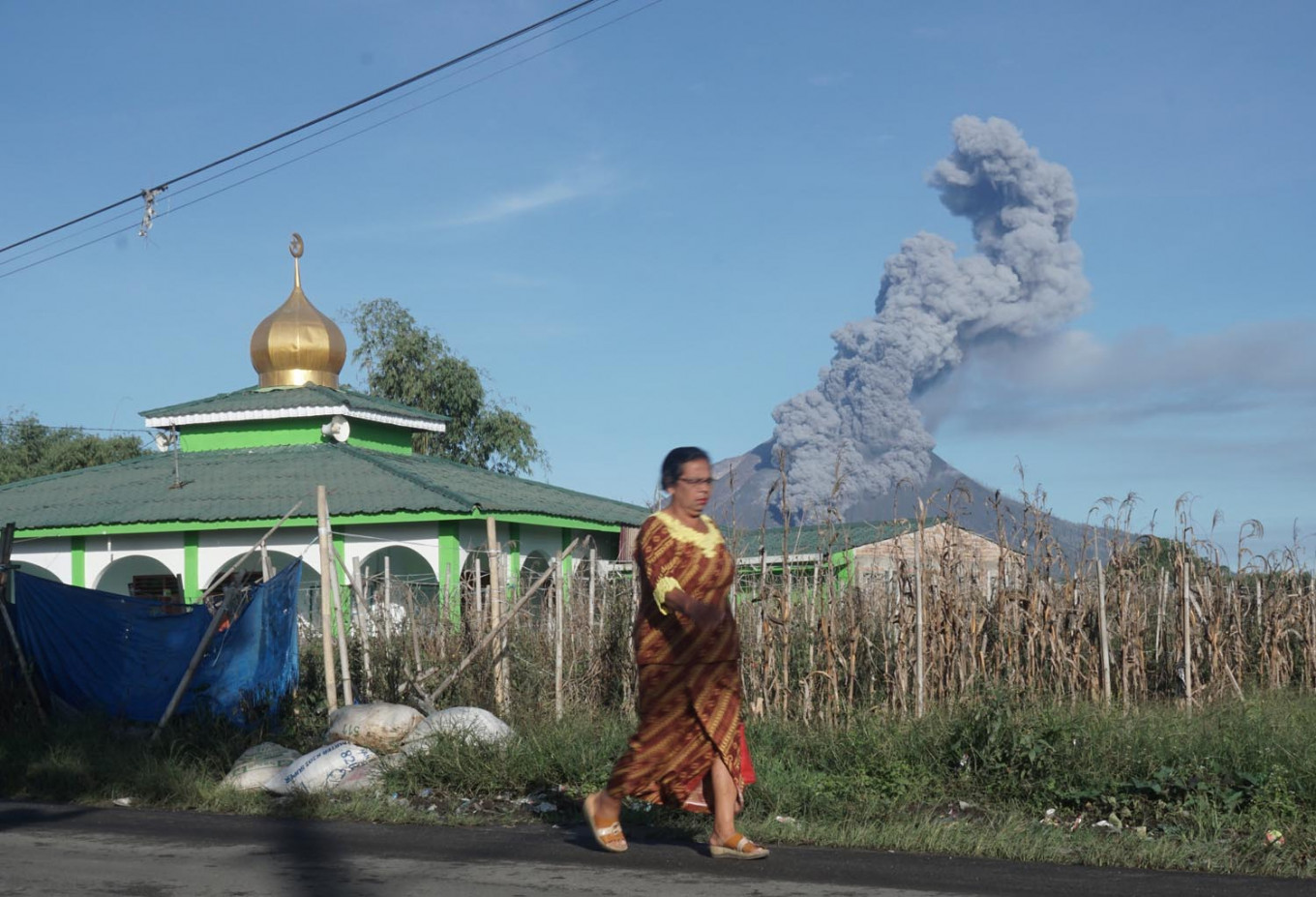Popular Reads
Top Results
Can't find what you're looking for?
View all search resultsPopular Reads
Top Results
Can't find what you're looking for?
View all search resultsMount Sinabung spews hot ash
“We need to be cautious because the lava dome in Mt. Sinabung is growing every day," an observation team member said.
Change text size
Gift Premium Articles
to Anyone
T
he Volcanology and Geological Hazard Mitigation Center (PVMBG) has warned the public to avoid Mount Sinabung in Karo regency, North Sumatra, and has evacuated nearby settlements as the volcano spews hot ash.
According to the PVMBG the volcano emitted a burst of hot ash at 12:51 p.m. on Sunday. The ash drifted some 1,500 meters southeast of the crater. It unleashed more ash, which drifted some 2,500 meters southeast, at 8:58 p.m. on the same day.
“We need to be cautious because the lava dome in Mt. Sinabung is growing every day. This condition can lead to a huge flow of hot ash,” Mt. Sinabung observation team member Muhammad Nurul Asrori told The Jakarta Post on Monday.
A lava dome, or volcanic dome, is a steep mound that forms as lava reaches the earth’s surface. It can gradually expand as additional lava is forced into its interior. The pressure on the interior of the dome can cause a fracture in the solidified outer shell that can allow lava or other volcanic material to escape onto the dome’s flanks. If the lava dome grows rapidly, it may collapse, spewing deadly volcanic material.
The PVMBG issued the warning after observing that many residents had remained on the mountain’s slopes. The center said the area had become a danger zone and that residents needed to leave, adding that pyroclastic flow could outrun humans.
“Before it happens, it might be best for us to avoid [the volcano] because no one can survive the fast ash clouds flowing from Mt. Sinabung’s craters,” Asrori added.
Nine residents of Gamber village, Simpang Empat district in Karo regency were killed by volcanic ash when Mt. Sinabung erupted in 2016. The deadly eruption of the volcano in 2014 also claimed 16 lives.
“Residents within 4 to 5 kilometers southeast of Mt. Sinabung have been evacuated and relocated,” Karo Disaster and Mitigation Agency (BPBD) acting chair Natanael Perangin-angin told the Post.
“The hot clouds are deadly. That is why we are continuing to coordinate with the Mt. Sinabung observation post regarding the development of volcanic activities,” he added.
The latest series of eruptions occurred on Aug. 10 as Mt. Sinabung spewed a 5,000-meter-high column of volcanic ash and smoke from its peak.
Meanwhile, more than 100 tons of carp and tilapia in Lake Toba, Samosir regency, North Sumatra were found dead on Thursday, possibly due to extreme weather, local officials have said.
Samosir Agriculture and Fisheries Agency head Viktor Sitinjak said the losses had set the local administration back at least Rp 2 billion (US$135,663).
All of the fish were contained in 39 floating cages owned by locals, according to Viktor.
Strong winds that recently occurred in the region are thought to have created a vortex at the bottom of the lake, asphyxiating and killing many fish within the floating cages, he said.
“The problem is that the water surrounding the floating cages is shallow, so it is prone to being muddied by strong winds, depriving the fish in the cages of oxygen,” Viktor told the Post on Friday.
He went on to say that the agency was currently preparing to bury the dead fish in Huta Tinggi village, Panguruan district so as to prevent contamination of Lake Toba and the surrounding areas.
Thursday’s discovery was not the first instance of such a phenomenon, Viktor said. In 2019, a large number of fish were also found dead in a portion of Lake Toba that lies between Dairi regency and Samosir regency.
Niolando Naibaho, an owner of one of the floating cages, said he was frustrated that 12 tons of his fish had died in the middle of the farming season.
“My losses amount to Rp 80 million,” Niolando told the Post, adding that he expected the administration to provide aid to residents impacted by the phenomenon as it deprived most of them of the capital to continue farming. (trn/rfa)










